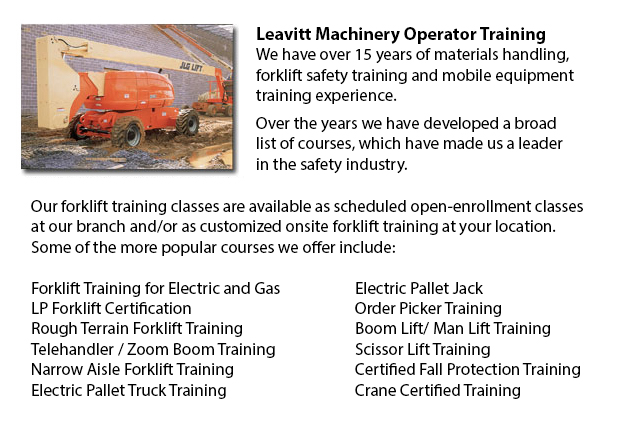
Kelowna Boom Lift License - Only completely certified persons should operate an aerial boom lift. Qualification can be obtained through a combination of classroom sessions and practical training with the particular type of aerial lift which will be used on the job. A License is needed for any individual who works on or operates an aerial boom lift.
Vehicle-mounted aerial devices consist of the following work vehicles: aerial ladders, extensible boom platforms, articulating boom platforms, vertical towers, and whichever combination of these kinds.
There are a number of basic safety rules which apply to all boom lifts. Worker safety whilst in the basket is a top priority. Workers should have on a body harness and lanyard attached to the boom or basket. Never tie off to an adjacent pole, structure, or equipment. Employees should stand on the basket floor, and never climb or sit on the basket edge. The load limits of the manufacturer must be adhered to.
Lift operators need to be authorized to operate an aerial lift. The manufacturer's manual should be kept within the lift and the operator must know all aspects of that particular unit. Operators are responsible for making certain that safety measures are followed in operating the lift. Testing lift controls on a daily basis must be performed. Position outriggers and set brakes (if they are utilized) on pads or a stable surface. If working on a slope, make use of wheel chocks.
Never move an aerial lift truck with an elevated boom while workers are inside the basket. Articulating boom and extensible boom platforms used as personnel carriers must have plainly marked, accessible, upper controls. Except in emergency situations, lower controls must not be used to override upper controls unless the individual in the lift gives permission.
Do not wear tree or pole climbers shall while working from an aerial lift.
Do not alter the insulated part of the aerial lift.
Make sure that the booms are carefully inspected, that the equipment is properly cradled and the outriggers are in the stowed position prior to moving.
When operating a boom lift next to power lines, make sure that the lines are di-electrically tested according to local regulations.
-
Kelowna Forklift Training Program
Kelowna Forklift Training Program - The lift truck is a common powered industrial vehicle which is in wide use these days. They are sometimes called hi los, lift trucks or jitneys. A departments store would use the forklift to unload and load merchan... More -
Kelowna Crane License
Kelowna Crane License - Crane operators ought to be "credentialed", that means they ought to have a crane operator certification or license. Credentialing is considered a mandatory governmental requirement in order to practice as an operator of a cra... More -
Kelowna Boom Lift Safety Training
Kelowna Boom Lift Safey Training - Boom lifts fall under the type of elevated work platform or aerial lifting device. Most usually used in warehousing, construction and industry; the boom lift is so versatile that it could be utilized in almost whate... More -
Kelowna Loader Training
Kelowna Loader Training - Loader Training - Any individual who would like to operate a forklift should take a Loader Training course in order to become a certified forklift truck operator. There are a variety of ways to obtain forklift training. Cour... More -
Kelowna Aerial Lift Safety Training
Kelowna Aerial Lift Safety Training - Each and every year, there are roughly 26 construction deaths attributed to the use of aerial lifts. Most of the craftsmen killed are electrical workers, laborers, painters, ironworkers or carpenters. The majorit... More -
Kelowna Crane Ticket
Kelowna Crane Ticket - Modern cranes can either be simple or complex, based upon the nature of the application they can carry out. For example, mobile cranes are somewhat simple units. A telescopic boom and even a steel truss mounts its movable platf... More -
Kelowna Boom Lift Operator Training
Kelowna Boom Lift Operator Training - The cherry picker work platform is a type of work platform, that will typically have a bucket or platform at the end of a hydraulic lifting system. The machine is likewise referred to as a man lift, boom lift, hy... More -
Kelowna Heavy Equipment Ticket
Kelowna Heavy Equipment Ticket - Depending on the nature of the job at hand, the kind of construction equipment that a heavy equipment operator makes use of differs. Every kind of machine is made to perform particular tasks in the most effective mann... More

Leavitt Operator Training
TOLL FREE: 1-888-254-6157
101-864 McCurdy Place
Kelowna, British Columbia
forkliftcertificationkelowna.com
Email Us
About Us


